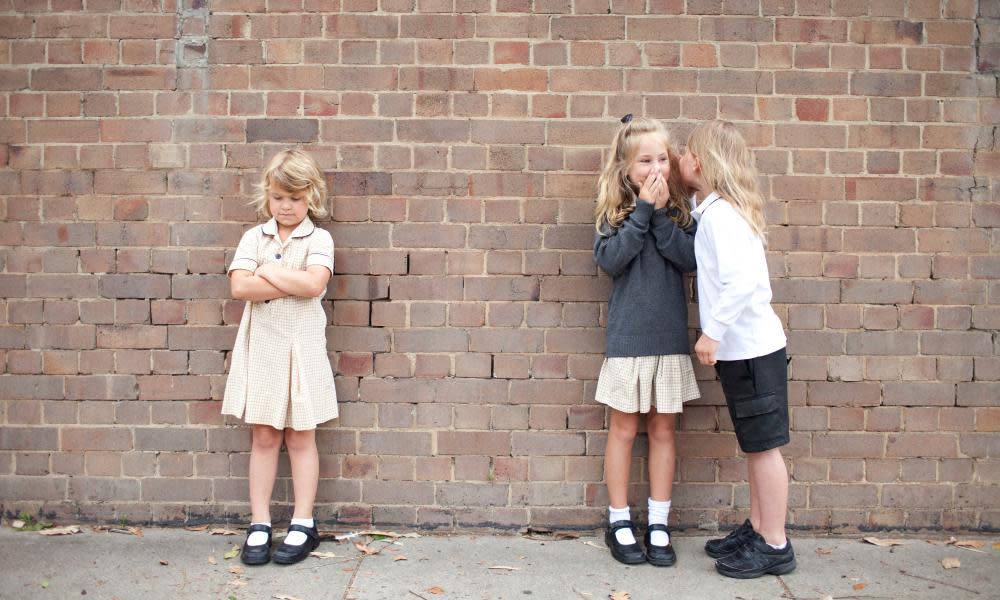Bullying is still rife in schools. Here's how teachers can tackle it

Many people will know what it feels like to be bullied. Despite a wealth of research and well-meaning interventions at a local level, bullying is still a common problem in UK schools (pdf) – and associated with depression, anxiety and even suicide.
Schools are legally obliged to tackle bullying, but they may not have had the adequate guidance or training to do so, meaning that attempts to address it often focus on the more obvious forms of bullying, such as physical aggression, and overlook the children’s views.
I have researched bullying for more than 10 years and implemented interventions in schools since 2014. My most recent intervention included 13 schools over a period of five months, and found that the most effective approaches enable children to play a leading role in resolving bullying.
We can get more students involved in advocating for an anti-bullying culture – here are some ways to get started.
Improve your understanding of bullying
Any school trying to tackle bullying needs to look beyond the “bully” and “victim” labels. Instead, it’s helpful to consider bullying as a spectrum of negative interactions that range from mild to severe, such as name-calling and hitting. Ask the children in your school about their experiences of bullying, why children might bully others, and how they think bullying should be addressed.
If teachers speak to children respectfully and consider their views, pupils are likely to do the same with peers
Bullying often happens because of a desire to be popular and to relieve boredom (pdf). To address this, help students find alternative ways to improve their status – by, for example, including ostracised pupils in activities and encouraging their peers to help.
Offer mentoring to ‘bullies’
Offer mentoring to those students who are persistently in trouble for bullying, to help them understand why they engage in this behaviour and resolve the underlying issues. Talking with students about what happened, the likely consequences of their actions, how they could respond more respectfully next time and role-playing alternative scenarios can all help break the pattern of negative behaviour.
Schools could provide regular sessions to resolve bullying proactively, rather than reacting to specific incidents after the fact. One pupil we worked with said afterwards: “I’ve quit all the fights and naughty things I’ve done.” Meanwhile, one headteacher we worked with told us there were no more reports of bullying at their school after they provided this type of mentoring.
Encourage pupils to help find solutions
Consult with children who engage in bullying and those who have been victimised to learn about their experiences – and seek recommendations of how bullying should be resolved.
Most children in my research experienced cyberbullying through gaming, but were primarily concerned with face-to-face bullying, which they felt was harder to avoid and ignore. In consulting with students, encourage them to talk about how they feel and reflect on how they can react to hurtful interactions more productively, rather than becoming extremely angry or upset. One pupil we worked with told us how these conversations helped to make a difference. “I used to scream and shout,” they said. “But I’ve learned to be calm.”
All students in my most recent study were encouraged to write in diaries regularly to provide a positive outlet for their emotions. The impact was stark. Rather than report every incident to teachers, we saw pupils speaking respectfully to those who engage in bullying, and were able to reflect on the bully’s perspective. Some children commented that they learned how to resolve bullying in their school and their lives outside of school.
Bring students together
After we worked individually with children who were in conflict with one another, they were brought together in a meeting. This was particularly revealing in the case of two boys who were perceived as bullying each other. The popular boy was seen as engaging in bullying the most because his friends were aggressive to the boy who was ostracised. However, the other boy often responded violently.
In the meeting, the ostracised boy explained how he was taking medication to improve his behavioural problems. The popular boy asked: “What do you want from me?” to which he replied, “Your friends”. Consequently, the more popular boy included him in social activities such as football and encouraged his friends to speak to him – as a result, the fighting stopped.
Create respectful staff-student relationships
Teachers and students must work together to tackle bullying. Some of the children who participated in our study said they felt sorry for a child who was forced to sit at the front of his class by his teacher – a number of them even offered to sit next to him and support him. Many teachers have said they’ve been surprised by children’s efforts to understand other pupils and stop bullying.
Strategies of how to resolve bullying between pupils and educators are being written into anti-bullying policies, although more research is needed to investigate bullying between pupils and teachers so that interventions can effectively identify and resolve the problem.
Teachers should consistently speak to children respectfully, listen to children, respond to their views and take time to understand their perspectives. Pupils are then more likely to then do the same with their peers.
• Elizabeth Nassem is a researcher at Birmingham City University’s Centre for the Study of Practice and Culture in Education
Follow us on Twitter via @GuardianTeach, like us on Facebook, and join the Guardian Teacher Network the latest articles direct to your inbox
Looking for a teaching job? Or perhaps you need to recruit school staff? Take a look at Guardian Jobs, the education specialist

 Yahoo News
Yahoo News 
